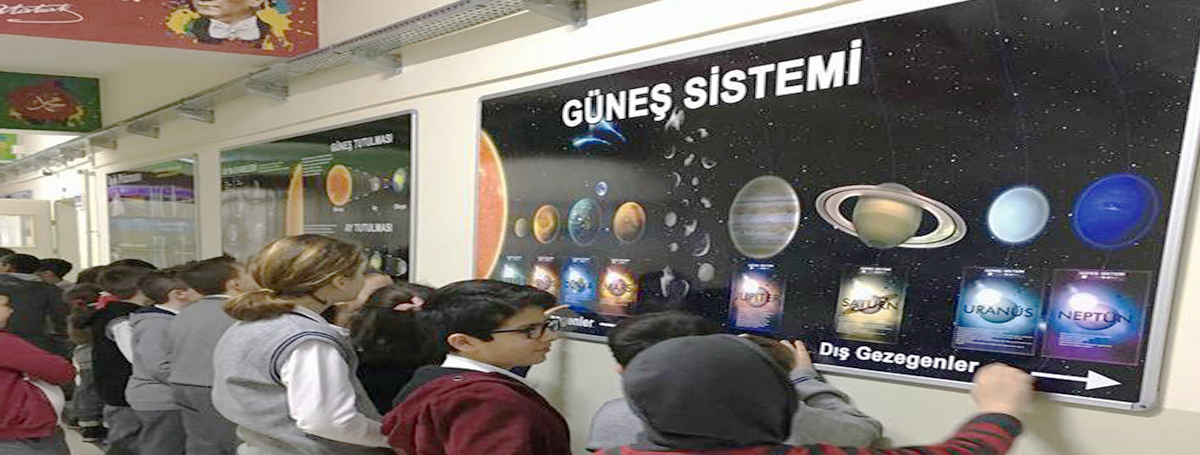
During the Ottoman Empire, a key objective of education was to raise 'excellent Muslims'. Therefore there was a need for Islamic scholars, which was sustained through Islamic Theology Schools, called Madrasa.In 1913, the Medresetü-l Eimmeti vel Hutaba (School of ministers and preachers Medresetü-l Vaazin were combined to form the concrete origins of today's Imam Hatip high schools
In 1924, the Tevhid-i Tedrisat (Law of Unification of Educational Guideline was passed, replacing the existing, mostly sectarian academic system with a nonreligious, centralist and nationalist education one. The new law brought all universities under the control of the Ministry of National Education. A Faculty of Faith at the Darülfünun (Istanbul University), unique schools for training imams and hatips (ministers and preachers) were opened by the brand-new Ministry of National Education. However, in 1930 İmam Hatip schools were closed and 1933 the Faculty of Divinity was eliminated.
In contrast to the solely secularist nature of the education policy of the Republican politician People's Party (CHP) religious education was renewed in 1948. This consisted of the establishment of a Faculty of Theology at the University of Ankara in 1949. First actions for the establishment of Imam Hatip schools started in 1951 under the Democrat Party government, which established 7 unique secondary schools (Imam Hatip Okulları). In addition, in 1959 Islamic Institutes were opened for graduates of Imam Hatip schools.
Following the coup d'etat in 1960, Imam Hatip schools encountered the danger of closure. Following the return to civilian politics and the intro of the brand-new constitution in 1961, graduates of Imam Hatip schools could just register in university programmes if they had actually passed courses used at secular schools. During the premiership of Süleyman Demirel nevertheless, graduates of Imam Hatip schools were offered access to university without such requirements. The 1971 Turkish coup d'état presented 2 crucial reforms: firstly junior high Imam Hatip schools were eliminated, and in 1973 Imam Hatip schools were relabelled as Imam Hatip high schools. Under the subsequent National Education Basic Law, Imam Hatip schools were specified as employment schools, where trainees were to be trained as preachers and ministers or prepared for higher education.
Imam Hatip schools grew slowly at first, however their numbers broadened rapidly to 334 during the 1970s. The coalition government of 1974, developed by the CHP and the MSP (National Salvation Celebration), devoted to resume junior high schools and giving the right of entry https://www.imamhatipavm.com/ to university through assessment. 230 brand-new Imam Hatip high schools were opened in a period of almost 4 years. Throughout the 1974-75 school year the variety of trainees taking care of the Imam Hatip high schools grew to 48,895. This number subsequently grew to 200,300 by 1980-81. In addition, females got the right of entry to Imam Hatip high schools in 1976. The proliferation of Imam Hatip high schools is typically mentioned as the result of the National Redemption Party's membership of a variety of coalitions with Nationalist Front federal governments.
Scenario given that 1980
The coup d'etat of September 12, 1980 is an important turning point in the history of Turkey and likewise for the history of Ä°mam-Hatip high schools. Under military governance, graduates of Imam Hatip high schools got the right of entry to all university departments. In 1985, two brand-new Imam Hatip high schools opened, one in Tunceli, despite of the so-called ethnic structure of the area, and the other in Beykoz as an Anatolian Imam Hatip High School, with the aim of adding to the education of kids of families who work abroad. Although the number of Imam Hatip high schools had actually not increased since, the variety of trainees going to Imam Hatip high schools has actually increased by 45%. This is partially due to the improvement in the quality of Imam Hatip high schools and the education provided at such schools.
During the education year of 1973-74, the overall variety of Imam Hatip students was 34,570; in 1997 this number had sharply increased to reach 511,502. Together with this enormous increase in appeal, the number of schools likewise increased. The variety of Imam Hatip junior high schools reached 601 and secondary schools 402. The increase in both trainee and school numbers can be credited to elements including the commitment of people to religious beliefs, dorm room facilities, scholarships, the admittance of females and a boost in demand for spiritual education.
Research suggests that between the years of 1993 and 2000, potential students signed up at Imam Hatip high schools primarily to receive religious tutoring along with a more general education.In addition, research reveals enrolment at Imam Hatip high schools was based exclusively on the trainee's decision. The 3rd suggested consider the increase in appeal of Imam Hatip schools is the admission of female students in 1976. By 1998, practically 100,000 women participated in Imam Hatip high schools, making up almost half of all students. This fact is especially exposing because females are not eligible to become either priests or ministers.
However, the introduction of 8 years of mandatory education in 1997 has seen an unexpected decline in the appeal of Imam Hatip schools. In 1999, the reclassification of Imam Hatip schools as "trade schools" implied that, although more options had actually been made readily available to graduates, obtaining locations at prestigious university courses became more difficult.By needing that all eight compulsory years of schooling be invested under the same primary-school roofing, intermediate schools were abolished. Kids could not enter vocational schools (among them the Imam Hatip school) up until the ninth grade (rather than the 6th, as before).